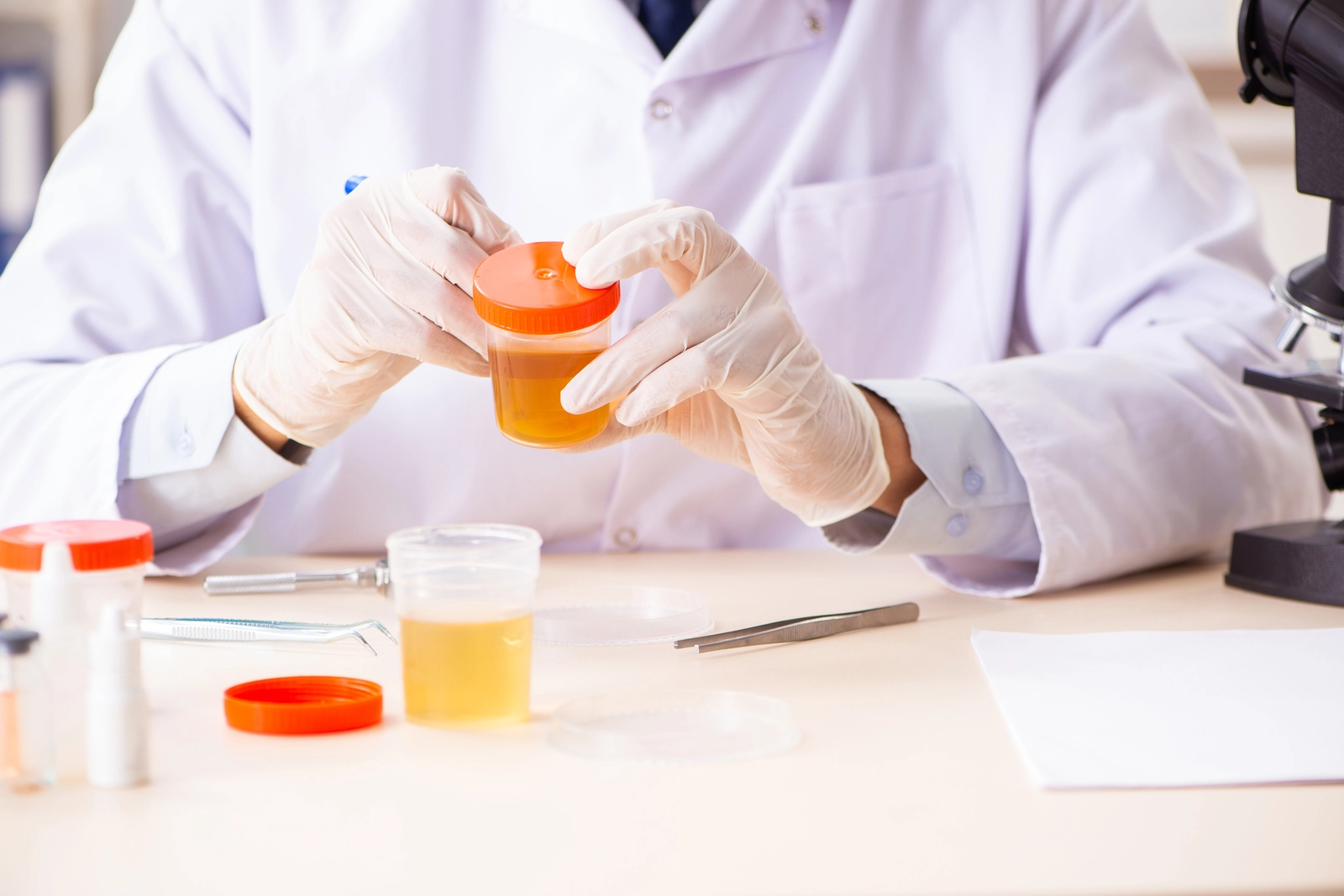Substances
Does Suboxone Show up on a Drug Test?
Medically Reviewed By
Written By
Last medically reviewed : July 3, 2025
Updated On : July 3, 2025
Substances
Medically Reviewed By
Written By
Last medically reviewed : July 3, 2025
Updated On : July 3, 2025
Suboxone contains a combination of medications used to treat opioid addiction. While it isn’t a regularly tested substance, Suboxone can show up on a drug screening.
In this blog, you’ll learn what Suboxone is, what it contains, and why someone would test for Suboxone use.
Suboxone is an FDA-approved medication for the treatment of opioid use disorder (OUD).[1][2] It is made from a combination of two drugs, buprenorphine and naloxone (the latter is sold as a standalone treatment under the brand name Narcan). [3]
Suboxone is a partial opioid agonist that works by binding to opioid receptors in the brain.[4] This produces similar effects to a full opioid such as heroin or fentanyl.[5] It also blocks the effects of the opioids above, deterring misuse.
Suboxone is a very valuable tool in treating opioid use disorder, but it is often used alongside other methods of treatment such as behavioral therapy and counseling.[7] Individuals who use Suboxone must follow a prescribed protocol and work closely with their healthcare provider to reach lasting sobriety.
According to Stat Pearls, opioid use disorder is defined as the chronic use of opioids that causes clinically significant distress or impairment.[8] This condition currently affects over 16 million people worldwide and more than 2.1 million in the United States alone.[8]
To receive a diagnosis of opioid use disorder, according to the Diagnostic and Statistical Manual of Mental Disorders, Fifth Edition, a person must have repeated opioid use within 12 months leading to problems with two or more of the following:[9]
The presence of six or more of these criteria indicates severe OUD.[10]
Signs and symptoms of opioid use disorder include, but are not limited to:[8]
Physical signs of opioid use disorder include:[8]

Yes, Suboxone can show up on a drug test.[11] However, standard drug tests, such as a five or 10-panel test, do not screen for Suboxone or its active ingredients. They are more commonly used to detect substances such as cocaine, amphetamines, and marijuana. However, a 12-panel drug test can detect it along with other prescription medications for drug addiction treatment, such as methadone.
Additionally, a hospital can order a blood test to detect the amount of Suboxone a patient has ingested, if it is suspected to have caused a life-threatening side effect or an accident.
Addiction treatment centers may require patients to undergo routine drug screenings to detect the presence of buprenorphine. This lets them know if the patient is taking Suboxone as prescribed. They may also test for the presence of barbiturates, oxycodone, PCP, benzodiazepines, or their metabolites. A positive result may indicate an ongoing struggle with substance abuse.
Other reasons for testing for the presence of Suboxone include:
It’s important to note that if you have a valid prescription for Suboxone, you are entitled to certain job protections under the Americans with Disabilities Act (ADA), ensuring your rights and security in the workplace.[12]
Suboxone drug tests are not common. They are typically only administered to fulfill legal obligations or as part of a personalized opioid use disorder treatment plan. If you are asked what drugs you’re taking during a drug screening, you may want to mention the use of Suboxone, as it can show up on some screenings.
Are you using Suboxone to manage a substance use disorder? If so, you might be wondering about other treatment options. At Engage Wellness Missouri, we’re here to help!
Contact us today to learn about the treatment programs we offer to support your journey to sobriety. Together, we can find the most suitable options for your healing and recovery.
Suboxone is a combination drug used to treat individuals with opioid use disorder. It is made from a combination of naloxone and buprenorphine.
Suboxone is classified as a Schedule III Controlled Substance. This means that, although it has medicinal benefits, it does carry a risk for abuse and misuse.
When used as prescribed, Suboxone has a low risk for addiction; however, using it in a manner other than prescribed or an amount different from that prescribed can result in increased tolerance, followed by physical dependency and addiction.
[1] National Library of Medicine. (2022 Oct 28). Suboxone: History, Controversy, and Open Questions. Retrieved from https://pmc.ncbi.nlm.nih.gov/articles/PMC9664560/ on 2025 May 13.
[2] Stat Pearls (2024 Jan 17). Opioid Use Disorder. Retrieved from https://www.ncbi.nlm.nih.gov/books/NBK553166/ on 2025 May 13.
[3] National Alliance on Mental Illness. (n.d.). Buprenorphine/Naloxone (Suboxone). Retrieved from https://www.nami.org/about-mental-illness/treatments/mental-health-medications/types-of-medication/buprenorphine-naloxone-suboxone/ on 2025 May 13.
[4] European Medicines Agency. (2024 Jul 24). Suboxone. Retrieved from https://www.ema.europa.eu/en/medicines/human/EPAR/suboxone on 2025 May 13.
[5] Yale School of Medicine. (2023 Apr 13). Use of Buprenorphine to Treat Fentanyl Distress Produces Few Adverse Reactions. Retrieved from https://medicine.yale.edu/news-article/use-of-buprenorphine-to-treat-fentanyl-produces-few-adverse-reactions/ on 2025 May 13.
[6] Harvard Health. (2024 Aug 8). 5 Myths About Using Suboxone to Treat Opioid Addiction. Retrieved from https://www.health.harvard.edu/blog/5-myths-about-using-suboxone-to-treat-opiate-addiction-2018032014496 on 2025 May 13.
[7] Science Direct. (2022 Aug). Psychosocial and Behavioral Therapy in Conjunction with Medication for Opioid Use Disorder: Patterns, Predictors, and Association with Buprenorphine Treatment Outcomes. Retrieved from https://www.sciencedirect.com/science/article/abs/pii/S0740547222000563 on 2025 May 13.
[8] Stat Pearls. (2024 Jan 17). Opioid Use Disorder. Retrieved from https://www.ncbi.nlm.nih.gov/books/NBK553166/ on 2025 May 13.
[9] Centers for Disease Control and Prevention. (n.d.). Opioid Use Disorder Diagnosis. Retrieved from https://www.cdc.gov/overdose-prevention/hcp/clinical-care/opioid-use-disorder-diagnosis.html on 2025 May 13.
[10] Yale Medicine. (2020 Dec). Opioid Use Disorder. Retrieved from https://www.yalemedicine.org/conditions/opioid-use-disorder 2025 May 13.
[11] Drugs.com (2025 Mar 21). Does Suboxone Show Up On a Drug Test? Retrieved from https://www.drugs.com/medical-answers/suboxone-show-drug-test-3535355/ on 2025 May 13.
[12] ADA. (2022 Apr 5). The ADA and Opioid Use Disorder: Combating Discrimination Against People in Treatment or Recovery. Retrieved from https://www.ada.gov/resources/opioid-use-disorder/ on 2025 May 13.